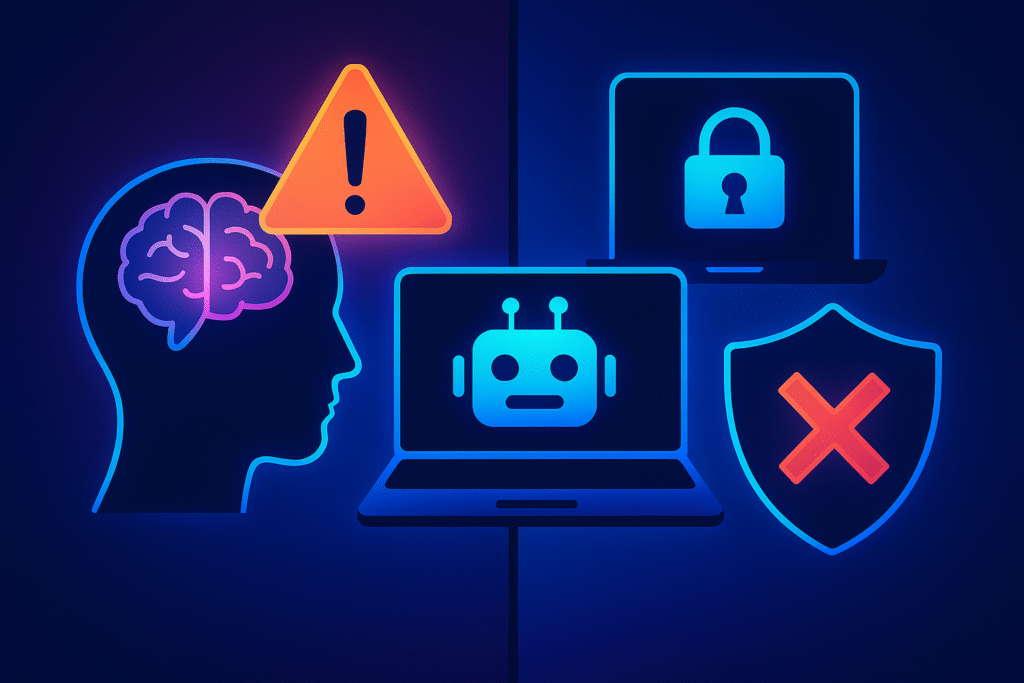Deepfake technology has quickly shifted from a niche experiment to a serious cybersecurity concern. Powered by advanced AI models, it enables the creation of highly realistic synthetic videos, audio, and images that convincingly mimic real individuals. Originally intended for entertainment, it’s now introducing significant risks across industries.
The Rise of Deepfake Technology
Deepfakes are AI-generated synthetic media, videos, audio, and images, that convincingly mimic real individuals. Powered by Generative Adversarial Networks (GANs), these tools have become widely accessible, lowering the barrier for cybercriminals.
Key Drivers Behind Growth:
Rapid AI Advancements
- GANs enable hyper-realistic content creation.
Open-Source Tools
- Platforms like DeepFaceLab make deepfake creation easy.
Social Media Amplification
- Manipulated content spreads quickly, fueling misinformation.
Deepfake-related incidents surged by 550% between 2019 and 2023, with the World Economic Forum naming disinformation and deepfakes as a top global risk in 2024.
Why Awareness Isn’t Enough
Many organizations recognize the dangers posed by deepfake technology, but awareness alone does not translate into effective protection. Knowing the threat exists is only the first step—without concrete action; businesses remain vulnerable to sophisticated attacks.
Key Reasons Awareness Falls Short
Lack of Detection Tools
- Most companies do not have AI-powered systems to identify synthetic media.
Slow Policy Development
- Security protocols often lack emerging threats like deepfakes.
Human Trust Factor
- Employees tend to trust visual and audio cues, making them easy targets for impersonation scams.
Resource Constraints
- Smaller organizations may lack the budget or expertise to implement advanced defenses.
Awareness must be paired with proactive measures, including technology adoption, employee training, and multi-layered verification systems to close the gap between knowing and securing.
Business Impact of Deepfake Attacks
Deepfake attacks are not just a technical nuisance, they can have severe financial, operational, and reputational consequences for organizations. As synthetic media becomes more convincing, businesses face growing risks that extend beyond traditional cybersecurity threats.
Key Impacts
Financial Losses
- Fraudulent transactions initiated through impersonated voices or videos of executives.
- Costly legal battles and compliance penalties following security breaches.
Reputational Damage
- Fake videos or audio clips can erode customer trust and investor confidence.
- Viral misinformation can tarnish brand image overnight.
Regulatory and Legal Risks
- Potential violations of data protection laws if deepfake content leads to breaches.
- Liability for failing to implement adequate safeguards against emerging threats.
Deepfake attacks exploit trust and speed, making them particularly dangerous in high-stakes environments like finance, healthcare, and government. Organizations must adopt AI-driven detection tools, multi-factor verification, and employee awareness programs to mitigate these risks.
Current Cybersecurity Shortcomings
Despite growing awareness of deepfake threats, most organizations remain unprepared to defend against them. Traditional cybersecurity measures were designed to combat malware, phishing, and network intrusions, not synthetic media manipulation. This gap leaves businesses vulnerable to attacks that exploit trust in visual and audio content.
Key Weaknesses
Outdated Security Frameworks
- Existing protocols rarely address the risks posed by AI-generated content.
Lack of Detection Technology
- Few organizations use AI-powered tools capable of identifying manipulated audio or video files.
Insufficient Authentication
- Reliance on voice or video verification for sensitive transactions creates opportunities for impersonation of attacks.
Minimal Employee Training
- Staff often lack awareness of how deepfake scams work, making them easy targets for social engineering.
Reactive Approach
- Many businesses respond only after an incident occurs, rather than implementing proactive monitoring and prevention.
Despite rising concern, only 37% of organizations are investing in deepfake defense, even as average losses exceed $280,000 per incident.
Building Resilient Defenses
As deepfake threats grow more sophisticated, organizations must move beyond awareness and adopt a proactive, layered defense strategy. The goal is to combine technology, policy, and human vigilance to minimize risk and respond effectively when attacks occur.
Key Strategies for Resilience
AI-Powered Detection Tools
- Implement advanced solutions that analyze audio, video, and image content for signs of manipulation.
Multi-Factor Verification
- Avoid relying solely on voice or video for identity confirmation. Combine biometric checks, secure tokens, and encrypted communication channels.
Employee Training and Awareness
- Equip staff with knowledge about deepfake tactics and teach them how to verify suspicious content.
Robust Incident Response Plans
- Prepare for rapid containment and recovery with clear reporting and mitigation protocols.
Vendor and Partner Collaboration
- Share threat intelligence across networks and industries to stay ahead of evolving attack methods.
Future Outlook
Deepfake technology is expected to become even more sophisticated, making detection and prevention increasingly challenging. As generative AI models improve, synthetic media will be harder to distinguish from authentic content, raising the stakes for businesses and regulators alike.
What’s Ahead
Stricter Regulations
- Governments and industry bodies will likely introduce compliance standards for synthetic media and identity verification.
Advanced Detection Tools
- AI-driven solutions will evolve to identify subtle inconsistencies in audio, video, and images.
Industry Collaboration
- Shared threat intelligence and partnerships between tech companies, cybersecurity firms, and regulators will become essential.
Increased Training and Awareness
- Organizations will invest more in employee education to recognize and report suspicious content.
Integration with Zero-Trust Models
- Deepfake defense will become part of broader zero-trust security frameworks, emphasizing continuous verification.
“The global deepfake AI market is projected to grow from $857 million in 2025 to $7.27 billion by 2031, driven by demand for detection and authentication solutions.”
Key Takeaway
Awareness is not enough. Organizations must act now by deploying AI-driven detection tools, implementing multi-factor authentication, and training employees to recognize deepfake threats. The cost of inaction is steep: financial losses, reputational harm, and regulatory penalties.

